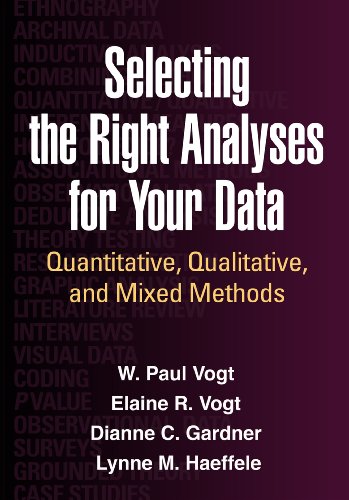What are the most effective methods to code and analyze data for a particular study? This thoughtful and engaging book reviews the selection criteria for coding and analyzing any set of data--whether qualitative, quantitative, mixed, or visual. The authors systematically explain when to use verbal, numerical, graphic, or combined codes, and when to use qualitative, quantitative, graphic, or mixed-methods modes of analysis. Chapters on each topic are organized so that researchers can read them sequentially or can easily "flip and find" answers to specific questions. Nontechnical discussions of cutting-edge approaches--illustrated with real-world examples--emphasize how to choose (rather than how to implement) the various analyses. The book shows how using the right analysis methods leads to more justifiable conclusions and more persuasive presentations of research results.
Useful features for teaching or self-study:
*Chapter-opening preview boxes that highlight useful topics addressed.
*End-of-chapter summary tables recapping the 'dos and don'ts' and advantages and disadvantages of each analytic technique.
*Annotated suggestions for further reading and technical resources on each topic.
See also Vogt et al.'s When to Use What Research Design, which addresses the design and sampling decisions that occur prior to data collection.
Useful features for teaching or self-study:
*Chapter-opening preview boxes that highlight useful topics addressed.
*End-of-chapter summary tables recapping the 'dos and don'ts' and advantages and disadvantages of each analytic technique.
*Annotated suggestions for further reading and technical resources on each topic.
See also Vogt et al.'s When to Use What Research Design, which addresses the design and sampling decisions that occur prior to data collection.








